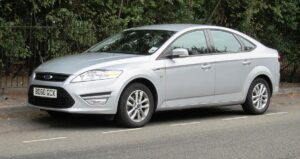If you’ve taken the somewhat brave, and economically savvy, decision to drive to the Alps for your family ski holiday, a quick refresher course on how to drive in the snow wouldn’t go amiss! With half-term starting for most families next week, chances are you’re well on your way with your road-trip preparations. Train/ferry booked? Check! Car properly serviced? Check! Extra provisions in case of emergency? Check! Snow chains at the ready? Doh! They’re buried at the bottom of the boot under all the luggage! Ahhh the joys of the family road trip to the Alps!
But how are you feeling about driving in the snow once you’ve arrived? Chances are VERY slim that your car is fitted with anything other than summer tyres so in the event you’ve got lots of snow at the resort (fun!) you may have been forced to put on snow chains. If you’ve ever put on snow chains, it certainly won’t be lost on you as to just how much of a hassle this is. The hassle-factor will often lead us to use snow chains as a last resort. Indeed, there are lots of situations where most main roads have been cleared of snow so you’re pretty sure you can make it to your destination without the aggravation of putting on your chains. Yet it’s precisely these situations where you must be extra careful, particularly if your short journey takes you on smaller side roads that haven’t been cleared. Read below for some tips on driving in the snow to help you and your family get to where you’re going, safely:
- If you’re rolling in a manual transmission, use 2nd gear to pull away from a stand still. Maintain your traction by quickly shifting to a higher gear to minimise wheel spin
- Maintain a constant speed that allows for maximum grip – if you do feel your tyres spinning, slow down until traction is resumed
- Accelerate, brake and steer as smoothly as possibly – sudden changes to any of these could result in a loss of control
- Leave even more space than you normally would if you’re following another vehicle. Added “runway” in the event you need to brake suddenly could make the difference between crashing into the car in front and, well, not crashing into the car in front
- By extension of the previous point, drive in such a way where you do not need to rely on hard braking to bring yourself to a complete stop, let alone to slow down. As above, this can be done by ensuring you’ve left enough space between you and the car/object in front to avoid hard braking
- When driving on multi-lane roadways, choose the lane that has the least amount of snow/slush in it. Sounds pretty basic, but you may find the “fast” lane is the cleanest of the lanes. If so, use it and don’t be concerned with reaching the speed limit. Recall that speed limits are set as the maximum legal speed that can be driven in Optimal Driving Conditions (ie dry roads and clear visibility)
And what happens if you get stuck, you ask? In this situation there are a couple of different options for you. Should you be stuck in a private drive, your best bet is to get yourself a shovel and start digging! In the absence of a shovel, try anything with a scoop at the end like a… ski! Failing that, try putting something in front of the drive wheels that will offer grip to the tyres. Sand, dirt, cat litter (!) can work or even your floormats or some dry newspaper. If you get stuck while driving up a hill, immediately put your warning lights on and slowly reverse until you’re back on a safe, flat, space that will allow you to put your chains on.
Memories from any ski holiday should be from the skiing and not how you got stuck (or worse) in the snow while driving to and from the slopes!




